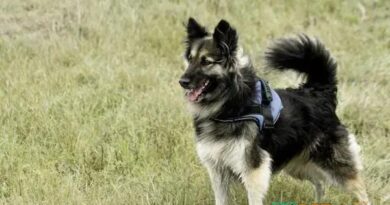O que é grooming frequency
What is Grooming Frequency?
Grooming frequency refers to how often a dog requires grooming services, which can include bathing, brushing, nail trimming, and ear cleaning. This frequency can vary significantly based on several factors, including the dog’s breed, coat type, age, and lifestyle. Understanding grooming frequency is essential for maintaining your dog’s health and appearance, as well-groomed dogs are less prone to skin issues and other health problems.
Factors Influencing Grooming Frequency
Several factors influence how often a dog needs grooming. For instance, long-haired breeds like the Afghan Hound or Shih Tzu often require more frequent grooming compared to short-haired breeds like Beagles or Boxers. Additionally, dogs that spend a lot of time outdoors may need more regular grooming to remove dirt, debris, and loose fur. Age also plays a role; older dogs may require more frequent grooming due to changes in their skin and coat condition.
Grooming Frequency by Coat Type
The type of coat a dog has is one of the most significant determinants of grooming frequency. Dogs with double coats, such as Huskies or Golden Retrievers, typically require grooming every 4 to 6 weeks to manage shedding and prevent matting. On the other hand, dogs with single coats, like the Dalmatian, may only need grooming every 6 to 8 weeks. Understanding your dog’s coat type can help you establish a suitable grooming schedule.
Seasonal Considerations for Grooming
Seasonal changes can also affect grooming frequency. During shedding seasons, typically spring and fall, dogs may require more frequent grooming to manage the increased amount of loose fur. Regular grooming during these times can help keep your home cleaner and reduce the amount of fur that accumulates. Additionally, some owners may choose to have their dogs groomed more frequently in warmer months to help keep them cool.
Signs Your Dog Needs Grooming
Recognizing when your dog needs grooming is crucial for their well-being. Signs that your dog may require grooming include excessive shedding, a matted coat, dirty ears, or overgrown nails. If you notice your dog scratching more than usual or if their coat appears dull and lifeless, it may be time to schedule a grooming appointment. Regular grooming not only enhances your dog’s appearance but also contributes to their overall health.
Benefits of Regular Grooming
Regular grooming provides numerous benefits beyond just aesthetics. It helps to remove dirt, debris, and dead hair, which can prevent skin irritations and infections. Grooming also allows for early detection of potential health issues, such as lumps or skin conditions. Furthermore, the grooming process can be a bonding experience between you and your dog, enhancing your relationship and making your pet feel more comfortable during handling.
Professional Grooming vs. At-Home Grooming
Deciding between professional grooming and at-home grooming can impact grooming frequency. Professional groomers have the tools and expertise to handle various coat types and can often provide services that may be challenging for pet owners to perform at home. However, regular at-home grooming can help maintain your dog’s coat between professional appointments, allowing for a more manageable grooming frequency.
Establishing a Grooming Routine
Establishing a grooming routine is essential for both you and your dog. Consistency helps your dog become accustomed to the grooming process, making it easier and less stressful over time. Start by determining your dog’s grooming frequency based on their breed and coat type, and then create a schedule that works for you. Incorporate brushing, bathing, and nail trimming into this routine to ensure your dog remains healthy and well-groomed.
Adjusting Grooming Frequency as Needed
It’s important to remain flexible with your grooming frequency as your dog ages or if their lifestyle changes. For instance, a previously active dog that becomes less mobile may require more frequent grooming to manage their coat and hygiene. Conversely, a dog that becomes more active may need less frequent grooming. Regularly assess your dog’s needs and adjust your grooming schedule accordingly to ensure they receive the best care possible.



